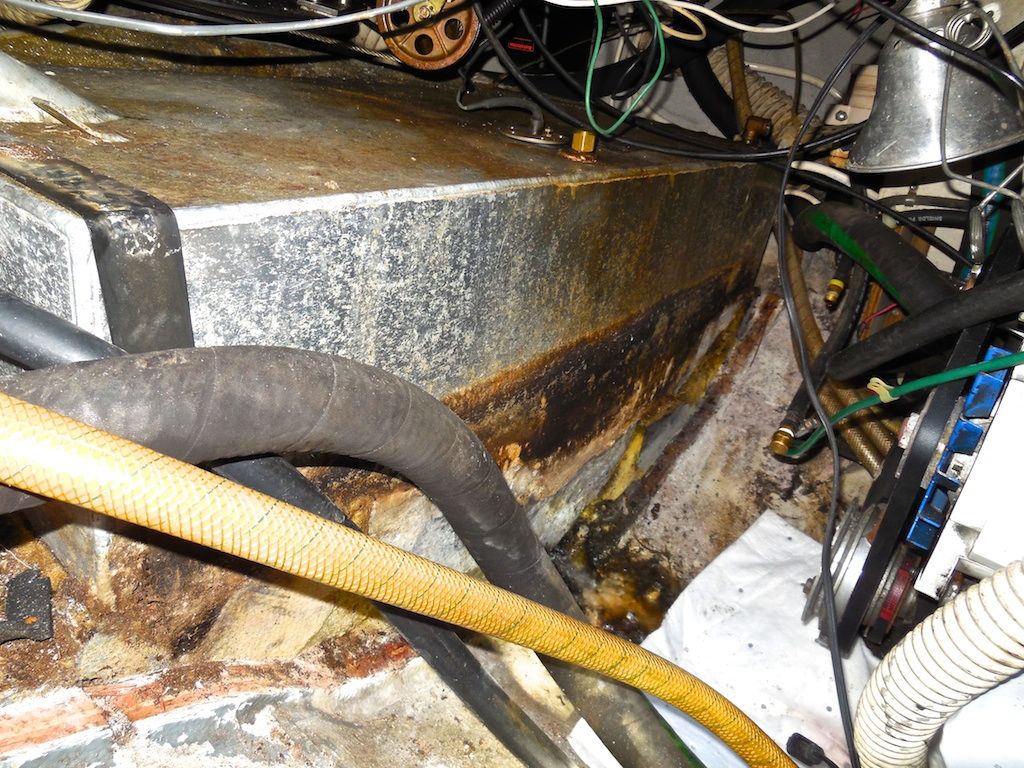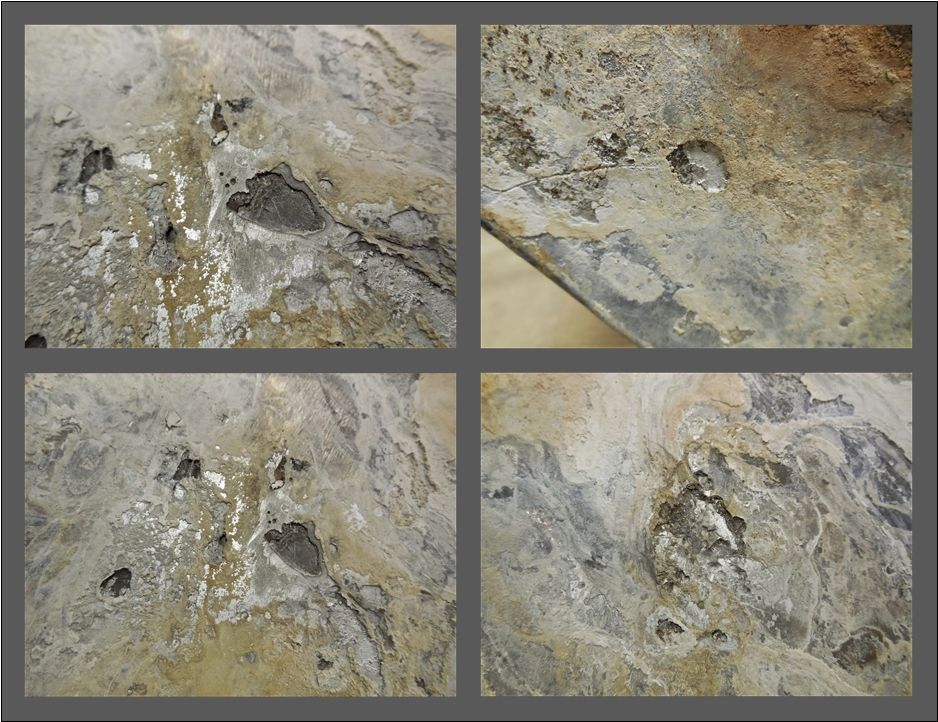Removing the Old Fuel Tank
--Blog post written by Bob
 |
| The bulkhead just forward of the old tank was been cutout using a Fein saw. |
 |
| Two of the four bolts that mount the shaft strut are actually located inside the fuel tank compartment. Salt water was leaking in through these bolts. |
To start the replacement process the diesel fuel in the old tank was pumped out (through the tank's fill connection) into a 55-gallon drum. The fuel will be polished (meaning extensively filtered) before pumping it back into the new tank. (There was about 25 gallons of fuel in the old tank.)
The next step was to remove the partial bulkhead just forward of the fuel tank. This was done using a Fein saw. A new bulkhead will be constructed in the shop using the old one as a pattern and installed after the new tank is in place. The old fuel tank was bedded in some type of foam.
Once loose, the old fuel tank was jockeyed into the starboard cockpit locker and then into the cabin through an area just aft of the companionway stairs, where the water heater normally resides. In this following photo (taken before the cutout was made), the area to be cut out is shown in red dashed lines and a red arrow points to the piece that will be removed and replaced after installation.
The old tank is now completely removed and it didn't look as bad as I had imagined but it was still worthwhile to replace it. There was some minor fuel leakage coming from the weld on the lowest point of the tank and some major pitting (probably caused by salt water exposure) on several areas of the tank that were bedded in the foam and subjected to intervals of wetting and drying. (The foam underneath the fuel tank was saturated with salt water.) The pitting depth seemed to be about half the thickness of the tank or more.
The cause of the salt water exposure was determined to be leaking mounting bolts for the shaft strut (shown in a photo above). These will have to be removed and properly bedded before the new tank is installed. To do this, the boat must be hauled out of the water (at more expense, of course) but, hopefully, the work can be done while the boat sits in the travel lift.
A discovery we made when the fuel tank was removed was that there were no limber holes in the fiberglass bulkhead aft of the tank where the rudder post housing is located. There is an accumulation of water aft of this bulkhead at times but it is believed to be fresh water coming from an access port right above this area. We decided NOT to drill limber holes in this area because of the difficulty in properly coated the exposed edges with epoxy since it was nearly impossible to get access to the aft side of this bulkhead.
While it may seem like at lot of projects are being completed, my current list of completed projects is at 50 while my future projects number 70. Next up is two recently added projects: the re-bedding of the shaft strut bolts and replacing the 30-year old motor mounts. The installation of the new fuel tank will be done last because of the needed access to the strut bolts and the tank being out makes it easier to replace the motor mounts as well.
The outside temperature has been in the low teens (degrees F) and the water has a layer of ice on the top…I can't wait until Spring!
Thanks for following our blog!
 |
| The temporary cutout in the bulkhead was made for removal of the old fuel tank. This view is looking toward the bow from inside the starboard cockpit locker. |
 |
| Pitting corrosion was evident in at least four different locations on the old fuel tank. These appear to have been caused by salt water exposure. |
The old tank is now completely removed and it didn't look as bad as I had imagined but it was still worthwhile to replace it. There was some minor fuel leakage coming from the weld on the lowest point of the tank and some major pitting (probably caused by salt water exposure) on several areas of the tank that were bedded in the foam and subjected to intervals of wetting and drying. (The foam underneath the fuel tank was saturated with salt water.) The pitting depth seemed to be about half the thickness of the tank or more.
The cause of the salt water exposure was determined to be leaking mounting bolts for the shaft strut (shown in a photo above). These will have to be removed and properly bedded before the new tank is installed. To do this, the boat must be hauled out of the water (at more expense, of course) but, hopefully, the work can be done while the boat sits in the travel lift.
 |
| Area aft of fuel tank once fuel tank was removed |
While it may seem like at lot of projects are being completed, my current list of completed projects is at 50 while my future projects number 70. Next up is two recently added projects: the re-bedding of the shaft strut bolts and replacing the 30-year old motor mounts. The installation of the new fuel tank will be done last because of the needed access to the strut bolts and the tank being out makes it easier to replace the motor mounts as well.
The outside temperature has been in the low teens (degrees F) and the water has a layer of ice on the top…I can't wait until Spring!
Thanks for following our blog!

No comments:
Post a Comment